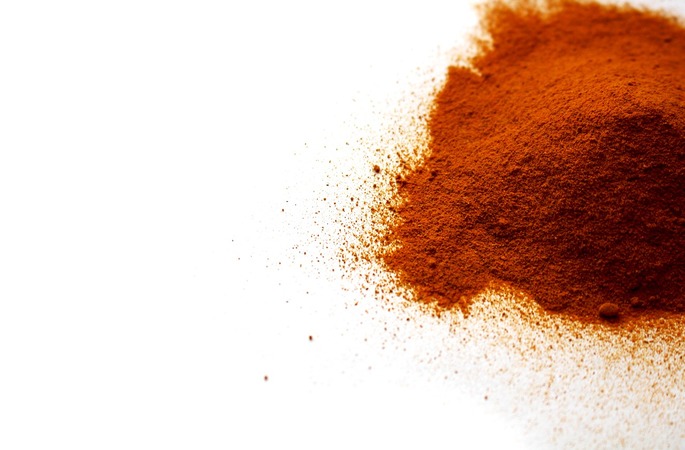It was an early autumn evening in early March, before COVID, when we were all allowed to be outside. And I was standing in line to the Sri Lankan food truck during the Adelaide Fringe, my cold body eagerly awaiting the devilled chicken and rice I was about to eat.
’18$?‘ my friend said. ‘That’s a tad much for a food truck curry hey’. I didn’t comment right away, but it did get me thinking about the reputation that most curry based cuisines have around the world – the reputation of being cheap or one that can be condensed to be easily accessible through a jar.
Throw ahead to a week or so later to sitting down for breakfast with my partner and I think about brunch menus. 22$ for fancy eggs on toast, but no one really bats an eye. Yet, replacing the same with a curry-based meal, and somehow the price expectation goes down.
Why? I think about the conversation at the food truck. I had stood in the early autumn chill, defending why a serve of kottu roti is worth more than $10. It got me thinking about the way in which curry cuisine is painted by the brush of colonisation, and the bias that somehow ‘Western’ food is more valuable.
Now before bringing in food costs, labour costs, etc., let’s ponder a few points.
Most of your average punters, myself included, would not blink twice about paying upwards of 40$ for a steak, but we baulk at the idea of having to pay more than 15$ for a meat-based curry.
It is puzzling because as cooks who are adept at curry cuisine will attest, making any sort of curry is not an easy task. Whether it’s a rich red Kaeng Phet (red curry) from Thailand, a coconutty Meen Moilee from Kerala or a bowl of unctuous pork kalu pol (blackened coconut pork curry), from Sri Lanka – curries are easy to learn but difficult to master.
Curries, in essence, are forgiving because the ingredients used typically are so reliant on the holy trinity of onion, garlic and ginger, and spices. These pungent aromatics will elevate any plain offering – and make even the most basic, watered-down versions of a curry taste halfway decent.
Yet, to achieve the roasted flavour of a properly cooked out spice base, to attain that elusive separation of oil on the surface of the curry in its red-orange patina – it takes work and skill developed through time and practice.
In Sri Lanka, rice and curry are every man’s food. The idea of paying more than 300 Srilankan rupees, for a well-made curry is laughable. But most won’t hesitate to spend upwards of 800 rupees on a smoothie bowl, a pan-fried chicken breast or a burger.
Whilst the cost of ingredients and accessibility definitely have a part to play, it is hard to ignore the elephant in the room. Curry isn’t considered ‘elegant, and it’s not viewed as a type of cuisine that’s elevated. This also points out the glaring classism in that curries are not commonly the feature of fine dining or up-market restaurants. Mercifully, this notion is changing in the world.
The likes of Floyd Cardoz Gaggan Anand and Nik Sharma have been instrumental in making subcontinental food delicious, accessible and elevated. Bo Songvisava has put Thai food as a preeminent form of eating in Thailand itself. And Sri Lanka’s own Dharshana Munidasa has accomplished much of the same within the island.
Their stories have a similar thread running through them though– when they first started, they were laughed and even ridiculed for even having the audacity to charge such high prices for stuff you can easily make at home. This attitude is worrisome for several reasons.
Firstly, it denies and glosses over the amount of nuance and skill displayed by everyday home cooks (cooks who are, to this day, women in most subcontinental kitchens). Housewives and domestic cooks’ skills are so taken for granted within broader subcontinental societies, and this attitudes also shines a light on the problematic assumption that home-cooked food has a 0$ value since it is cooked at home.
It is fundamentally looking at the labour of homemakers, mothers and wives as zero value labour. This is a problem in attitude and perception. Secondly, there is a problem in practice. Consider that typical ‘Western’ food is also achievable at home – one can cook a perfect steak or make a burger for half the price paid at a specialist restaurant that has these items on offer on the menu. Yet, we observe that those who can cook a good piece of steak at home for 20$ will still pay 52$ for a steak at a nice restaurant. but will refuse to do the same, if the cuisine is curry based. “It’s just a curry, I am not paying that much for a curry” are words often heard and read. On a personal level, it creates a deep sadness that cuisines that require as much practice and skill as other cuisines are so easily denigrated, even though food costs would remain relatively same across the board.
There is a vicious cycle in all of this. Curry is everyday food for cultures that embody curry as its integral fare. Regardless of the money in your bank account or how many houses you have, a dhal is a dhal, and a chicken curry is a chicken curry. The end results are essentially the same for all.
This is the beauty of curry-based cuisine – but also where the problem compounds. The perception from us ‘locals’ – those who hail from curry-based cuisine cultures as discussed above- is the attitude of “curry is home-cooked, I’m not paying that much for something I can make at home” has firmly planted the notion in our heads that curry is cheap.
We are mainly to blame for how our cuisines are perceived and viewed. Consider that no one questioned Alison Roman’s “stew” or how classy and elegant it was (even though she pretty much made a chickpea-based dhal curry) and Caucasian people all over the world rushed to make her recipe.
It is a whole other can of worms that she hijacked POC culture for fame, but it does shed light on how poorly we have denigrated the place of our own cuisines on the world stage that a white woman had to share it to be deemed worthy.
Ultimately, this had led to those in the food business that own curry-centric restaurants to find a way to make their curries cheap. Thus the reinforcement of the notion of the “cheap” curry.
What this highlights is a need for an attitude adjustment. It is happening – in that more and more chefs of subcontinental backgrounds are moved to not undercharge for the food of their people. And this is an excellent place to start. The danger in relying on Western society to instigate this changing attitude in how curry is perceived is that this can lead to the fetishisation of curry-based cuisine instead of the normalisation of its inherent value.
So, the duty falls to us – to educate, to facilitate dialogue and to firmly believe that the food culture we belong to, despite its humility, is worthy of sophistication.



